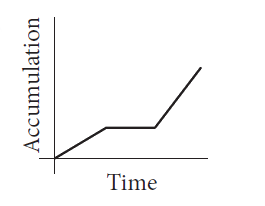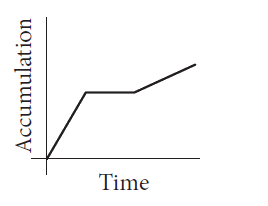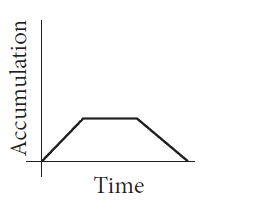Mango, tuna fish , snow leopards are
Euryhaline
Stenothermal
Eurythermal
Eurythermal & eurtyhaline
The correct Answer is:B
To determine the classification of mango, tuna fish, and snow leopards based on their tolerance to environmental conditions, we can analyze each term provided in the question.
1. Understanding the Terms:
- Urehyaline: This term refers to organisms that can tolerate a wide range of salinity in water. Typically, these organisms can thrive in both freshwater and saltwater environments.
- Stenothermal: This term describes organisms that can tolerate only a narrow range of temperatures. They are sensitive to temperature changes and thrive in specific thermal conditions.
- Urethermal: This term indicates organisms that can withstand a wide range of temperatures, often found in extreme environments like deserts.
- Urethermal and Urehyaline: This combines both terms, suggesting organisms that can tolerate a wide range of both temperature and salinity.
2. Analyzing Each Organism:
- Mango: This is a terrestrial plant that grows in warm climates and does not tolerate extreme salinity. It is not urehyaline.
- Tuna Fish: This species is a marine fish that thrives in specific temperature ranges of ocean waters. It is not urehyaline as it cannot tolerate a wide range of salinity.
- Snow Leopard: This is a terrestrial mammal that lives in cold mountainous regions and is adapted to specific temperature ranges. It is not urehyaline.
3. Evaluating the Options:
- Option 1 (Urehyaline): Incorrect, as none of the organisms can tolerate a wide range of salinity.
- Option 2 (Stenothermal): Correct, as all three organisms can tolerate only a narrow range of temperatures.
- Option 3 (Urethermal): Incorrect, as these organisms do not thrive in extreme temperature ranges.
- Option 4 (Urethermal and Urehyaline): Incorrect, as they do not fit into either category.
4. Conclusion: The correct classification for mango, tuna fish, and snow leopards is that they are stenothermal, as they can only tolerate a narrow range of temperatures.
Final Answer:
Mango, tuna fish, and snow leopards are stenothermal organisms.
---
- Urehyaline: This term refers to organisms that can tolerate a wide range of salinity in water. Typically, these organisms can thrive in both freshwater and saltwater environments.
- Stenothermal: This term describes organisms that can tolerate only a narrow range of temperatures. They are sensitive to temperature changes and thrive in specific thermal conditions.
- Urethermal: This term indicates organisms that can withstand a wide range of temperatures, often found in extreme environments like deserts.
- Urethermal and Urehyaline: This combines both terms, suggesting organisms that can tolerate a wide range of both temperature and salinity.
- Mango: This is a terrestrial plant that grows in warm climates and does not tolerate extreme salinity. It is not urehyaline.
- Tuna Fish: This species is a marine fish that thrives in specific temperature ranges of ocean waters. It is not urehyaline as it cannot tolerate a wide range of salinity.
- Snow Leopard: This is a terrestrial mammal that lives in cold mountainous regions and is adapted to specific temperature ranges. It is not urehyaline.
- Option 1 (Urehyaline): Incorrect, as none of the organisms can tolerate a wide range of salinity.
- Option 2 (Stenothermal): Correct, as all three organisms can tolerate only a narrow range of temperatures.
- Option 3 (Urethermal): Incorrect, as these organisms do not thrive in extreme temperature ranges.
- Option 4 (Urethermal and Urehyaline): Incorrect, as they do not fit into either category.
Mango, tuna fish, and snow leopards are stenothermal organisms.
Topper's Solved these Questions
- ORGANISMS AND POPULATIONS BOOK - AAKASH INSTITUTE ENGLISHCHAPTER - ORGANISMS AND POPULATIONS EXERCISE - ASSIGNMENT (SECTION-B) (Objective Type Questions)
35 Videos
- ORGANISMS AND POPULATIONS BOOK - AAKASH INSTITUTE ENGLISHCHAPTER - ORGANISMS AND POPULATIONS EXERCISE - ASSIGNMENT (SECTION-C) (Previous Years Questions)
66 Videos
- ORGANISMS AND POPULATIONS BOOK - AAKASH INSTITUTE ENGLISHCHAPTER - ORGANISMS AND POPULATIONS EXERCISE - EXERCISE
30 Videos
- NEURAL CONTROL AND COORDINATION BOOK - AAKASH INSTITUTE ENGLISHCHAPTER - NEURAL CONTROL AND COORDINATION EXERCISE - Assignment SECTION - D (Assertion-Reason Type Questions )
10 Videos
- PHOTOSYNTHESIS IN HIGHER PLANTS BOOK - AAKASH INSTITUTE ENGLISHCHAPTER - PHOTOSYNTHESIS IN HIGHER PLANTS EXERCISE - Assignment(section D)
10 Videos
Similar Questions
Knowledge Check
Snow fell and then stopped for a time. When the snow began to fall again, it fell at a faster rate than it had initially. Assuming that none of the snow melted during the time indicated, which of the following graphs could model the total accumulation of snow versus time?
A B
B C
C D
D
Mango juice is got from
View SolutionIn potato, brinjal, lion, leopard, and tiger, how many species and genera are there respectively?
View SolutionAssertion : Lung fish is connective link between fishes and amphibia.
Reason : Lung fishes show characters of both fishes and amphibia.
View Solutionin a particular geographical area. If leopards and lions feed on similar prey, they may show ……………. .
View SolutionIf there are 50 mangoes in a box, how will you write the total number of mangoes in terms of the number of boxes? (Use b for the number of boxes.)
View SolutionEndoskeleton of fishes are made up of cartilage and bone. Classify the following fishes as cartilaginous or bony : Torpedo, sting ray,Dog fish,Rohu, Angler fish, Exocetus.
View SolutionThe average speed of a snails is 0.020 miles/ hour and that of a leopard is 70 miles/hours. Coinvert these speeds is SI units.
View Solution
